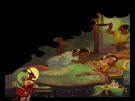 Here is a companion item on nanotechnology to the story below.
Here is a companion item on nanotechnology to the story below.Physicists have directly measured how close speeding atoms can come to a surface before the atoms' wavelengths change.
The scientists at the University of Arizona say, "The measurement tells nanotechnologists how small they can make extremely tiny devices before a microscopic force between atoms and surfaces, called van der Waals interaction, becomes a concern. The result is important both for nanotechnology, where the goal is to make devices as small as a few tens of billionths of a meter, and for atom optics, where the goal is to use the wave nature of atoms to make more precise sensors and study quantum mechanics."
Learn more about this interesting study by visiting the University of Arizona's news story. The work is reported in Physical Review Letters.





